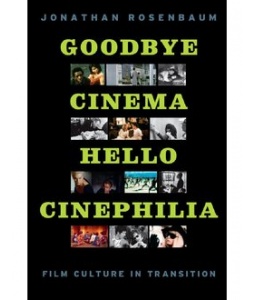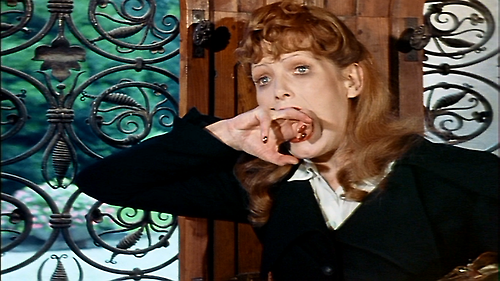Rainer Werner Fassbinder: A Baby Caligula
Rainer Werner Fassbinder (1945–82), hard-living, frenetic (libertine, bourgeois-scourging) New German filmmaker would have turned sixty-seven today, had he survived even into his forties. Strong-armed by the influence of Brechtian theater and Jean-Luc Godard’s Weekend (1967), Fassbinder went on to direct forty films and made-for-television performances—though like the Frenchman L. J. M. Daguerre and the American John Waters (puppet theater), Fassbinder’s background was the stage, and it showed. His early work is marked by a static camera and dialogue not conceivably of this world; he goes on the record in a piece later reprinted for Cineaste, where he states:
“I would like to build a house with my films. Some are the cellars, others the walls, still others the windows. But I hope in the end it will be a house.”
To watch a Fassbinder film is to participate, if only through mediation, in the tailwinds of the director’s cultural persona, his bad-boy whipping-up of a post-fascist, prejudicial German zeitgeist. To cogently locate him politically, and to infer his contributions to post-war, avant-garde cinema nearly three decades after his death, is a bit trickier.
Coincidentally, it was almost thirty-eight years ago to the day that Fassbinder’s Martha premiered on German television. Martha was the film Fassbinder completed immediately prior to Ali: Fear Eats the Soul (perhaps his most acclaimed production), though it was initially released in the aftermath of that film’s successes. Shot entirely on 16mm, and dealing with typical themes for the director (the fascist undertones of traditional family structures, physical and emotional paralysis, sadism, hysteria, dead cats, obsession, exceedingly banal-yet-mortified facial expressions), it was Martha‘s DVD-release in 2004 that first allowed the film to reach many American audiences.
Never one to shy away from controversy, longtime critic and blogger Jonathan Rosenbaum took on the film—and Fassbinder—in “Martha: Fassbinder’s Uneasy Testament,” featured in his 2010 collection Goodbye Cinema, Hello Cinephilia: Film Culture in Transition, which collects some of Rosenbaum’s most discriminating pieces from the past four decades, including several like this one, which focus on newly circulating releases and other developments of the digital age. An excerpt follows below.
__________________________________________________________________________________________
 Part of my reluctance to join the Fassbinder bandwagon in the ’70s was that I couldn’t accept without qualms the critical industry’s interpretation of his work as left-wing and subversive—an interpretation that was intricately bound up with the rediscovery of Douglas Sirk’s ’50s Hollywood movies by Fassbinder and others. For academics who argued—and in many cases still argue—that Sirk soap operas like Imitation of Life were subversive critiques of American life rather than conformist endorsements, a certain historical sleight of hand was necessary, particularly when it came to dealing with the reception those movies were given back in the ’50s. Sirk—a leftist stage director in pre-Nazi and Nazi Germany and something of a closet intellectual and campy commercial director in both Germany and the U.S.—made movies with conservative, defeatist, and conformist as well as skeptical and subversive elements. The conservative elements played most indelibly to his producers and his contemporary audiences; the skeptical and subversive ingredients were more often cynically and carefully buried, waiting to be discovered by future generations.
Part of my reluctance to join the Fassbinder bandwagon in the ’70s was that I couldn’t accept without qualms the critical industry’s interpretation of his work as left-wing and subversive—an interpretation that was intricately bound up with the rediscovery of Douglas Sirk’s ’50s Hollywood movies by Fassbinder and others. For academics who argued—and in many cases still argue—that Sirk soap operas like Imitation of Life were subversive critiques of American life rather than conformist endorsements, a certain historical sleight of hand was necessary, particularly when it came to dealing with the reception those movies were given back in the ’50s. Sirk—a leftist stage director in pre-Nazi and Nazi Germany and something of a closet intellectual and campy commercial director in both Germany and the U.S.—made movies with conservative, defeatist, and conformist as well as skeptical and subversive elements. The conservative elements played most indelibly to his producers and his contemporary audiences; the skeptical and subversive ingredients were more often cynically and carefully buried, waiting to be discovered by future generations.
Reconciling Sirk’s or Fassbinder’s cynicism with a leftist political agenda has always struck me as somewhat problematic. Both directors tend to deal with characters incapable of understanding their own social victimization and, more often than not, incapable of change; regarding these doomed characters with ironic compassion, Sirk and Fassbinder are to my mind more defeatist than progressive because their sophistication often consists of recognizing corruption and stupidity, not of imagining situations where they might be overcome. The worlds both directors conjure up resemble more stylish versions of the repressed world found in W. C. Fields comedies—bounded on all sides by irritations and petty frustrations. (“There are no lighthearted moments in any Fassbinder film that I can recall,” Gary Indiana wrote in the February 1996 Artforum. “If a character’s happy, it’s because he hasn’t yet heard the bad news.”) Fassbinder differs most strikingly from Sirk in focusing much more often on working-class and petit bourgeois characters, at least through the mid-seventies—Martha is a notable exception—but the sense of entrapment is no less pronounced.
Sirk’s stylistic hallmarks include theatrical uses of lighting, color, and mirrors, and his thematic hallmarks include blindness; in the most general terms, one could say his movies are about ways of seeing and not seeing. Fassbinder’s self-conscious and relatively low-budget appropriation of these hallmarks make them at once more overt and more overtly campy, so that contemporary readings of Fassbinder films are fully in tune with these attitudes in a way that contemporary readings of Sirk films were not. (For the record, the heroine of Martha is named Martha Hyer—after an actress who played in one Sirk feature, the 1956 Battle Hymn, though Hyer’s association with a genteel and somewhat bookish upscale repression is probably tied more directly to her role in the 1959 Vincente Minnelli melodrama Some Came Running.)
Openly bisexual, tyrannical on his sets, and habitually dressed in a leather jacket, Fassbinder cut a starlike figure in the firmament of New German Cinema, though in this respect he was hardly alone. If the French New Wave of the ’60s was mainly about films, the New German Cinema of the ’70s was mainly about filmmakers, and each of its best-known directors had a claim to fame that was largely a matter of public image: eccentric exhibitionism crossed with German romanticism (Werner Herzog), existentialist hip crossed with black attire and rock ‘n’ roll (Wim Wenders), Wagnerian pronouncements (Hans-Jürgen Syberberg), a dandy’s stupefied worship of shrines and divas (Werner Schroeter), and so on. When it came to Fassbinder, who improbably evoked both John Belushi and Andy Warhol, one was made to feel that the real drama in film after film wasn’t so much in the makeshift characters or the fruit-salad images but in the offscreen intrigues of a baby Caligula manipulating his players and technicians.
Although it was made for German TV, Martha benefited from having a bigger budget than was usual for Fassbinder at the time—which allowed for some Italian location shooting as well as a more baroque and elaborate camera style than one finds in most of his other features (such as a spectacular 720-degree tracking shot encircling Martha and her husband-to-be, Helmuth Salomon, when they first encounter one another in Rome, immediately after her father’s death). It’s tempting to ascribe this kind of high style—also apparent at the banquet back in Germany where Martha first gets introduced to Helmuth—to personal factors. Fassbinder appears to have had a particular investment in this material that his collaborators have noted, including cinematographer Michael Balhaus and Karlheinz Böhm in Juliane Lorenz’s Chaos as Usual: Conversations About Rainer Werner Fassbinder (New York/London, Applause Books, 1997). The latter reports that Fassbinder consciously based the portrayal of Helmuth Salomon on his own father, and even dressed like his father in conservative neckties, shirts, and suits throughout the film’s production—an association that seems echoed by Helmuth surfacing magically as a kind of doppelganger-replacement for Martha’s own father immediately after his death.
Certainly the tension that we briefly observe at the outset between father and daughter paves the way for her equally conflicted determination much later in the story to accede hilariously to Helmuth’s desire for her to read a book on dam construction during his absence. (Typically, she initially rebels against this directive, then winds up memorizing entire passages that she can recite to him.) And even without reading the Woolrich story that inspired the plot, one can infer that the paranoia and masochism that underlie Woolrich’s special brand of suspense and horror are perfectly suited to Fassbinder’s ideological project. This obliges us to identify with Martha’s anguish even at those selected moments when we can’t be entirely sure how much her masochism is inflected by her paranoia, thereby obliging us to question how much her imprisonment is a function of her own will. Part of the luminosity and passion of Carstensen’s performance is to make us feel that ambiguity and ambivalence, all the way up to the impending sense of doom carried in the final shot.
